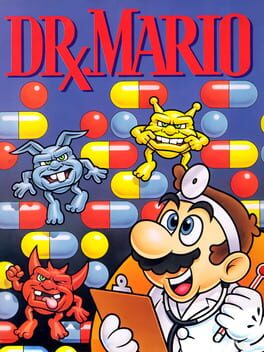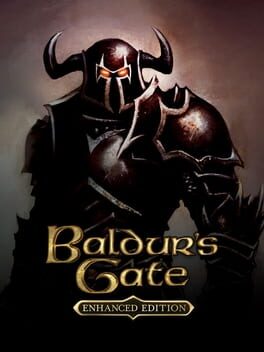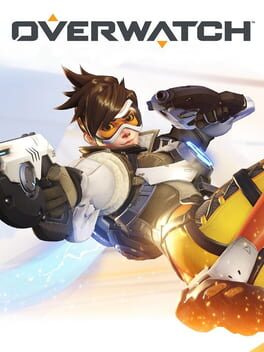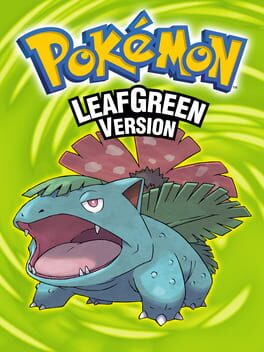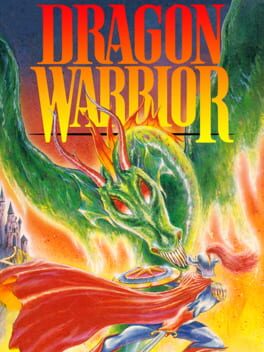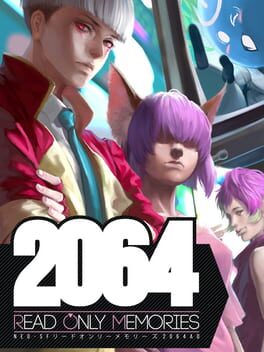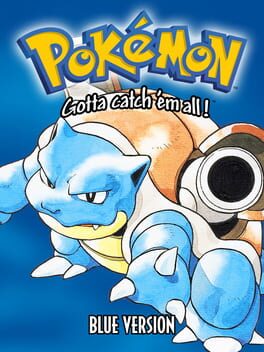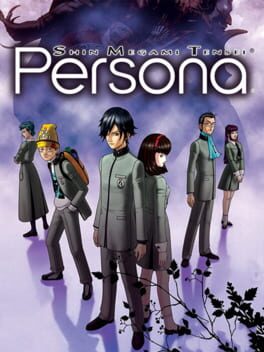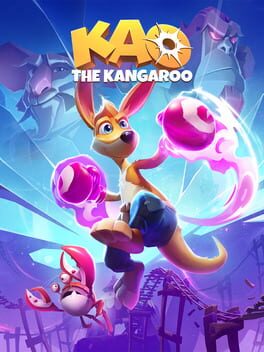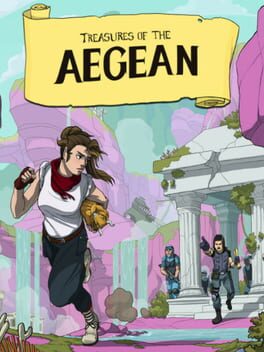Raith
1988
The best NES game? Probably. There is only one other game I can think of that comes close, and I'll reserve judgement on that when I eventually get to my replay (at which point, I'll be sure to update this review with my definitive answer to this question).
There is basically a second NES hidden away inside the cart of this game, one of the benefits of being a late NES release. That extra power is used to expand the formula of the first Super Mario Bros in all the right ways. A world map, a selection of different powerups to discover, 8 unique worlds with different themes, and a fresh coat of paint which still holds up to this day. SMB3 is one of the few NES games that is still just as good to play today as it was to play when it released over 30 years ago. Easily in the top 10 platformers ever made.
Do I need to say more? Play this game if you haven't. It's "required playing" in the video game cannon.
There is basically a second NES hidden away inside the cart of this game, one of the benefits of being a late NES release. That extra power is used to expand the formula of the first Super Mario Bros in all the right ways. A world map, a selection of different powerups to discover, 8 unique worlds with different themes, and a fresh coat of paint which still holds up to this day. SMB3 is one of the few NES games that is still just as good to play today as it was to play when it released over 30 years ago. Easily in the top 10 platformers ever made.
Do I need to say more? Play this game if you haven't. It's "required playing" in the video game cannon.
1990
It's not a bad game. Far from it. But like many "match x" puzzle games that released around the time and much later, the gameplay is best experienced in short bursts. For that reason it is not a great home console game to sit down and play for hours, but it makes a great game on a handheld that can be played anywhere whenever you have some downtime to kill. For this reason, the Gameboy release far outshines the NES release, despite the latter's added polish.
I have a feeling this game has seen significant changes to balance over the years, because the experience I had playing through Dark Souls for the first time was a far cry from the reputation it had gained in the early days of its release.
Sure, some things are a little obtuse and you can find yourself stuck or making things a lot more difficult for yourself if you don't pay attention to everything, but I would honestly call Dark Souls a fairly reasonable game difficulty wise.
My shattered expectations aside, Dark Souls is a well crafted game and it's easy to see why it spawned possibly one of the most iconic sub-genres since the "Doom-like".
The story and lore is intriguing, wrapped in mystery. So much is left up to the player to investigate that there are entire elements of the game locked behind finding and helping certain individuals that you can easily miss. When I went to face the final boss, I did so knowing I had seen only a fraction of what the world had to offer. Future playthroughs will probably be done with a guide to find the games many secrets.
The areas I didn't enjoy so much were the lack of good fast travel in the early game (shortcuts don't cut it when I'm still having to run for 5-10 minutes) that made backtracking a chore. I also think the games difficulty curve was a bit out of whack, with the end game being incredibly easy compared to earlier parts. This was probably due to some overpowered gear, but almost all of the final bosses consisted of me just running up and bonking them with my big club until they died. Very little strategy or learning attack patterns like in the early stages of the game. It wasn't until the final boss that I even had to change my load out so I could parry attacks, at which point the fight was trivial.
Overall, happy to finally play through one of the most important games of the 360/PS3 generation.
Sure, some things are a little obtuse and you can find yourself stuck or making things a lot more difficult for yourself if you don't pay attention to everything, but I would honestly call Dark Souls a fairly reasonable game difficulty wise.
My shattered expectations aside, Dark Souls is a well crafted game and it's easy to see why it spawned possibly one of the most iconic sub-genres since the "Doom-like".
The story and lore is intriguing, wrapped in mystery. So much is left up to the player to investigate that there are entire elements of the game locked behind finding and helping certain individuals that you can easily miss. When I went to face the final boss, I did so knowing I had seen only a fraction of what the world had to offer. Future playthroughs will probably be done with a guide to find the games many secrets.
The areas I didn't enjoy so much were the lack of good fast travel in the early game (shortcuts don't cut it when I'm still having to run for 5-10 minutes) that made backtracking a chore. I also think the games difficulty curve was a bit out of whack, with the end game being incredibly easy compared to earlier parts. This was probably due to some overpowered gear, but almost all of the final bosses consisted of me just running up and bonking them with my big club until they died. Very little strategy or learning attack patterns like in the early stages of the game. It wasn't until the final boss that I even had to change my load out so I could parry attacks, at which point the fight was trivial.
Overall, happy to finally play through one of the most important games of the 360/PS3 generation.
It's easy to see why this game is heralded as the start of a great run of CRPGs. Though my knowledge of DnD is quite small, I was more or less able to grasp the systems in place. Though I may have done things a bit differently, I was still able to utilize a good amount of strategy.
One thing that I kind of picked up on that carries over from what I understand of DnD from my limited experience is the ability to kind of cheese the game system if you really know what you are doing. Of you want it to be, the game can be made a lot easier as you spam enemies with broken mechanics or exploit the rather simple AI.
The story and world building are two aspects that really stood out from such an early RPG. But I guess that's mostly to be expected when you set your game in one of the most well crafted fantasy worlds ever made.
The characters fell a bit flat because of the limited dialogue though. Outside of the little biography on each characters profile I basically don't know anything about any of my companions. NPC's are even worse as you really don't interact or talk with them much. Most dialogue is centered around quests, so you don't get a good sense of the characters.
I also disliked how most of the strategy in combat seemed to come from preparation beforehand (equipping the right spells, having the right potions, etc.). A good portion of the combat was just clicking on enemies to attack. I much prefer the JRPG style of combat that gives every character, regardless of class, different skills and abilities to use during combat that add more layers to it.
Overall though, if you enjoy RPGs this is probably one you should experience at least once.
One thing that I kind of picked up on that carries over from what I understand of DnD from my limited experience is the ability to kind of cheese the game system if you really know what you are doing. Of you want it to be, the game can be made a lot easier as you spam enemies with broken mechanics or exploit the rather simple AI.
The story and world building are two aspects that really stood out from such an early RPG. But I guess that's mostly to be expected when you set your game in one of the most well crafted fantasy worlds ever made.
The characters fell a bit flat because of the limited dialogue though. Outside of the little biography on each characters profile I basically don't know anything about any of my companions. NPC's are even worse as you really don't interact or talk with them much. Most dialogue is centered around quests, so you don't get a good sense of the characters.
I also disliked how most of the strategy in combat seemed to come from preparation beforehand (equipping the right spells, having the right potions, etc.). A good portion of the combat was just clicking on enemies to attack. I much prefer the JRPG style of combat that gives every character, regardless of class, different skills and abilities to use during combat that add more layers to it.
Overall though, if you enjoy RPGs this is probably one you should experience at least once.
1986
There are certainly some great ideas in Metroid's first outing, but it is plagued by poor design choices that lead to a more frustrating experience than a fun one.
Getting the good out of the way, the first Metroid really nailed the sense of exploration and loneliness the series is known for. Stumbling into a new corridor or finding a new area of the map has such a good sense of discovery.
Unfortunately, the levels are not designed in such a way to be easily explored. Recurring layouts can make the exploration a chore as you keep going back to the same places without realizing. You are going to need to use a guide or keep a piece of paper handy to map out where you have been and points of interest you need to return to. This could be forgiven as just a product of it's time (even though the sequel on the Gameboy was able to implement a map feature to completely fix this issue) if it wasn't for the obtuse level design that constantly hides areas you have to reach in order to progress.
Random blocks in the floor, ceiling or wall can be shot to reveal hidden passages and there is nothing to reveal where these passages are. This leads to a lot of backtracking, blasting away at every surface you can see once you realize these hidden passages are there. I wouldn't mind if there was some indication as to where these passages were (such as slightly off color tiles to reveal their location or some hint in the level design that would lead you to believe there is something behind the solid surface) but there isn't. You're left to just blast everything you see.
The other part of the games design that often leads to frustration is the abysmal drop rate of items from enemies. If you are unfortunate enough to die at any part of the game, you'll be forced to grind enemies for upwards of 15 minutes to recover your health and missiles to attempt a challenge again. This was a common part of design in early NES games (the original Mega Man comes to mind), meant to increase the challenge and inflate play time. But getting another 1-2 hours out of a game by forcing players to mindlessly grind enemies is not what I call fun nor engaging gameplay.
The sequel on Gameboy fixes most of the problems found in the original, but unfortunately exploration became a lot more linear and the repeated boss fights make areas feel too samey. It wasn't until Super Metroid that they finally perfected the formula, producing what many consider one of the best games ever made.
Getting the good out of the way, the first Metroid really nailed the sense of exploration and loneliness the series is known for. Stumbling into a new corridor or finding a new area of the map has such a good sense of discovery.
Unfortunately, the levels are not designed in such a way to be easily explored. Recurring layouts can make the exploration a chore as you keep going back to the same places without realizing. You are going to need to use a guide or keep a piece of paper handy to map out where you have been and points of interest you need to return to. This could be forgiven as just a product of it's time (even though the sequel on the Gameboy was able to implement a map feature to completely fix this issue) if it wasn't for the obtuse level design that constantly hides areas you have to reach in order to progress.
Random blocks in the floor, ceiling or wall can be shot to reveal hidden passages and there is nothing to reveal where these passages are. This leads to a lot of backtracking, blasting away at every surface you can see once you realize these hidden passages are there. I wouldn't mind if there was some indication as to where these passages were (such as slightly off color tiles to reveal their location or some hint in the level design that would lead you to believe there is something behind the solid surface) but there isn't. You're left to just blast everything you see.
The other part of the games design that often leads to frustration is the abysmal drop rate of items from enemies. If you are unfortunate enough to die at any part of the game, you'll be forced to grind enemies for upwards of 15 minutes to recover your health and missiles to attempt a challenge again. This was a common part of design in early NES games (the original Mega Man comes to mind), meant to increase the challenge and inflate play time. But getting another 1-2 hours out of a game by forcing players to mindlessly grind enemies is not what I call fun nor engaging gameplay.
The sequel on Gameboy fixes most of the problems found in the original, but unfortunately exploration became a lot more linear and the repeated boss fights make areas feel too samey. It wasn't until Super Metroid that they finally perfected the formula, producing what many consider one of the best games ever made.
2016
I remember when the trailer for this first dropped and blew me away. The Pixar like animation and expressive characters drew me on instantly. And, in this rare circumstance, the hype didn't disappoint.
Despite lacking a story mode to explore them the characters all feel incredibly unique and deep. There is so much lore packed into the original cast that you only pick up through voice lines and random tidbits through the game.
The gameplay was incredibly fun. Everyone felt like they had an impact, and despite some rough patches inherent with any multiplayer game my memories are mostly positive.
I feel like every generation has a one or two games that kind of define them, and this was definitely one that defined the Xbox One / PS4 generation for me.
Despite lacking a story mode to explore them the characters all feel incredibly unique and deep. There is so much lore packed into the original cast that you only pick up through voice lines and random tidbits through the game.
The gameplay was incredibly fun. Everyone felt like they had an impact, and despite some rough patches inherent with any multiplayer game my memories are mostly positive.
I feel like every generation has a one or two games that kind of define them, and this was definitely one that defined the Xbox One / PS4 generation for me.
This (and it's counterpart in Pokemon Fire Red) is the definitive version of Gen 1 for those who are curious to experience the origins of the world largest media franchise.
Everything that was off in the originals, such as the numerous bugs, has been fixed. And the graphical updates to the game stand up to this day.
Of course the problems inherent to the first game are still present, like the lack of an interesting quest/story (outside of your rival and Professor Oak, no character has more than like 4 lines of dialogue), the unbalanced nature of some types and the fact that the combat was somewhat basic.
But with all that said it still remains a fun experience from beginning to end and makes it clear why this franchise has remained on top since 1996. It's just plain fun to try and catch em all.
Everything that was off in the originals, such as the numerous bugs, has been fixed. And the graphical updates to the game stand up to this day.
Of course the problems inherent to the first game are still present, like the lack of an interesting quest/story (outside of your rival and Professor Oak, no character has more than like 4 lines of dialogue), the unbalanced nature of some types and the fact that the combat was somewhat basic.
But with all that said it still remains a fun experience from beginning to end and makes it clear why this franchise has remained on top since 1996. It's just plain fun to try and catch em all.
1986
It's easy to see why this game became such a sensation upon release. The bones of what makes a great JRPG are all there, and the Akira Toriyama designs are wonderful.
But in the grand scheme of the NES library this was very much a rough draft. The story is kind of inconsequential and the game really just boils down to "grind here for experience and gold in order to move to the next area where you'll do the same thing".
Within a year the first Final Fantasy was released that introduced real quest lines and a world that was full of discovery, plus a new level of strategy with the player deciding the party composition and things like elemental weaknesses.
So is it a must play? I think everyone should probably at least experience it somehow to see what is widely considered the grandfather of JRPGs. But I don't think it's necessary to grind your way through the whole game. There just isn't enough substance to sustain it the whole way through.
But in the grand scheme of the NES library this was very much a rough draft. The story is kind of inconsequential and the game really just boils down to "grind here for experience and gold in order to move to the next area where you'll do the same thing".
Within a year the first Final Fantasy was released that introduced real quest lines and a world that was full of discovery, plus a new level of strategy with the player deciding the party composition and things like elemental weaknesses.
So is it a must play? I think everyone should probably at least experience it somehow to see what is widely considered the grandfather of JRPGs. But I don't think it's necessary to grind your way through the whole game. There just isn't enough substance to sustain it the whole way through.
Great pixel artwork and an ok soundtrack are probably the games strongest points.
The voice acting is very hit or miss, with some of the bigger misses coming from internet personalities. I get the want to boost marketing for your game by hiring popular YouTubers to do some voice work, but the overall quality suffers from it.
The story is about what you would expect if you were to read a mid 2010's fanfic. Dialogue is stiff, all subtlety is thrown out the door as it bonks you over the head with its themes and messages. Characters either act like assholes or preachers. For a game that is 99% storytelling, the writing left a lot to be desired.
There is a serious lack of puzzles or things to do as well to distract from the writing. Most of the game is spent listening to characters talk. At least the main character who you will spend most of your time talking to is relatively well done in both writing and voice acting compared to the rest of the cast.
The voice acting is very hit or miss, with some of the bigger misses coming from internet personalities. I get the want to boost marketing for your game by hiring popular YouTubers to do some voice work, but the overall quality suffers from it.
The story is about what you would expect if you were to read a mid 2010's fanfic. Dialogue is stiff, all subtlety is thrown out the door as it bonks you over the head with its themes and messages. Characters either act like assholes or preachers. For a game that is 99% storytelling, the writing left a lot to be desired.
There is a serious lack of puzzles or things to do as well to distract from the writing. Most of the game is spent listening to characters talk. At least the main character who you will spend most of your time talking to is relatively well done in both writing and voice acting compared to the rest of the cast.
1996
Is it the best Pokemon game you can play right now? No. The sprites were off from Ken Sugimori's iconic artwork, there are several bugs and design flaws (some moves are just broken, psychic is insane), and some technical drawbacks (limited storage space in bag for example) but man did it get a lot right.
151 unique monsters to fight, train and collect. The fact that in order to complete the pokedex you needed the other version to trade with, cementing the series legacy of putting an emphasis on connecting with others.
The battle system wasn't anything revolutionary at the time but it works. The "story" can be mostly ignored. For a RPG in 1996 it is pretty solid. Releasing on the original Gameboy also helps this game stand out amongst its contemporaries, being a bright spot in the Gameboy's library.
151 unique monsters to fight, train and collect. The fact that in order to complete the pokedex you needed the other version to trade with, cementing the series legacy of putting an emphasis on connecting with others.
The battle system wasn't anything revolutionary at the time but it works. The "story" can be mostly ignored. For a RPG in 1996 it is pretty solid. Releasing on the original Gameboy also helps this game stand out amongst its contemporaries, being a bright spot in the Gameboy's library.
I'm not going to lie, I'm not sure if I actually would recommend playing this game. For now, I'm going to say if you are a hardcore RPG fan it's still worth playing through once. Not only to have a better understanding of the roots of a classic series, but it legitimately has some good ideas in here (mostly brought over from SMT games that came before to be honest).
The OST slaps, though some prefer the original. I liked this one a lot though and if I was someone who listened to VGM there are one or two songs I'd be immediately putting into my playlist. Visuals and character designs are fine, though they don't stand out comparatively.
The story is ok. The plot is interesting, but it features a lot of RPG / Anime jank where characters just do things because that's what the game needs you to do to progress. The fact that there are demons invading (and seemingly killing people) doesn't really faze the high school kids you play as, and you'll do a lot of stuff because "it's the right thing to do" or "to help a friend". Character writing and development for most of the cast is pretty mediocre, but there are some interesting moments surrounding the character Maki.
What drags down the experience for me was the really bad progression curve. It seemed like the game wanted you to recruit demons from new areas as you encountered them in order to fuse new personas to help with the new challenge, but my party was usually underleveled which prevents you from recruiting them. On the off chance I was actually able to recruit new demons, the persona's they made were often 5-10 levels higher than what I could use. Combine this with the fact that by abusing elemental weakness you can take on enemies of a higher level (which you should be doing anyways), and what I found was that I rarely used the fusion system for the first half of the game. It wasn't until I was ready to face the (true) final boss that I even thought about what persona's I needed. Even then, because guns are so powerful, I only cared about what my persona's resistances were rather than building a team with varied abilities.
So even though the game has dozens of persona's you could theoretically make, you rarely need to until the late game. Also, a bunch of the really powerful ones you are probably supposed to use to defeat the final boss (the ultimate persona's given to you in the dungeon before the final dungeon for example) would have required me to grind 10+ levels for some characters, which would have taken hours.
The demon fusion system is really deep, but unfortunately you don't really get to engage with it much unless you grind for hours to get your characters levels up to where the game wants them to be.
The OST slaps, though some prefer the original. I liked this one a lot though and if I was someone who listened to VGM there are one or two songs I'd be immediately putting into my playlist. Visuals and character designs are fine, though they don't stand out comparatively.
The story is ok. The plot is interesting, but it features a lot of RPG / Anime jank where characters just do things because that's what the game needs you to do to progress. The fact that there are demons invading (and seemingly killing people) doesn't really faze the high school kids you play as, and you'll do a lot of stuff because "it's the right thing to do" or "to help a friend". Character writing and development for most of the cast is pretty mediocre, but there are some interesting moments surrounding the character Maki.
What drags down the experience for me was the really bad progression curve. It seemed like the game wanted you to recruit demons from new areas as you encountered them in order to fuse new personas to help with the new challenge, but my party was usually underleveled which prevents you from recruiting them. On the off chance I was actually able to recruit new demons, the persona's they made were often 5-10 levels higher than what I could use. Combine this with the fact that by abusing elemental weakness you can take on enemies of a higher level (which you should be doing anyways), and what I found was that I rarely used the fusion system for the first half of the game. It wasn't until I was ready to face the (true) final boss that I even thought about what persona's I needed. Even then, because guns are so powerful, I only cared about what my persona's resistances were rather than building a team with varied abilities.
So even though the game has dozens of persona's you could theoretically make, you rarely need to until the late game. Also, a bunch of the really powerful ones you are probably supposed to use to defeat the final boss (the ultimate persona's given to you in the dungeon before the final dungeon for example) would have required me to grind 10+ levels for some characters, which would have taken hours.
The demon fusion system is really deep, but unfortunately you don't really get to engage with it much unless you grind for hours to get your characters levels up to where the game wants them to be.
2023
This is a fusion of a deckbuilding game and poker, but the emphasis is placed almost 70 / 30 on how much you'll be engaging with the games poker vs. deckbuilding mechanics. There is so much more emphasis on getting high pairs or high suits in order to attack and defend, while the custom deck you build to go into each campaign feels like it acts as a supporting role. I got through half of the campaigns offered before I ever changed a card from the starting deck.
So as a deckbuilder it kind of fails to provide really challenging or interesting deck building challenges. Almost anything will work. Combine that with the rather slow progression of unlocking new abilities and cards, and by the end of the final campaign I really only had one viable strategy for the character I was using. There were clearly other strategies based on cards I unlocked, but I didn't get enough of them or the abilities unlocked that supported them. I wanted to explore the class I played with more, but I simply couldn't.
There is a great idea here, but it is a little too underbacked to really call it a "good" experience.
So as a deckbuilder it kind of fails to provide really challenging or interesting deck building challenges. Almost anything will work. Combine that with the rather slow progression of unlocking new abilities and cards, and by the end of the final campaign I really only had one viable strategy for the character I was using. There were clearly other strategies based on cards I unlocked, but I didn't get enough of them or the abilities unlocked that supported them. I wanted to explore the class I played with more, but I simply couldn't.
There is a great idea here, but it is a little too underbacked to really call it a "good" experience.
2010
How surprising, the only game Todd Howard didn't get his hands on turns out to be the best game from Bethesda I've yet to play.
In saying that, there is still a lot of room for improvement. Though the problem of gunplay feeling imprecise and random from Fallout 3 with the addition of ADS (as well as guns just having less RNG spread it seems, though that might just be my perception), it still lacks a punch. The combination of no real recoil plus some lackluster sound design makes most of the guns feel like peashooters. Even the explosions feel like they lack a punch, not helped by the fact you can hit someone square in the jaw with a 40mm grenade and they'll charge at you like nothing happened.
The story of this one is significantly better too. There are significant choices you can make throughout the story that will impact the ending, with multiple routes you can take. Important NPCs can be killed that will change what quests you'll have available and how things shake out. Really it was the only thing keeping me invested in seeing things through. I wanted to see how my choices would impact the world and pan out in the end.
The characters unfortunately remain forgettable. Caesar and Mr. House were the most interesting, but most of your interactions involved either them giving you quests or exposition dumping a bunch of lore if you choose to ask them some questions. You don't really get to just see their personality or interact with them outside of the stilted conversations you'll have with them, but that's common among all Bethesda RPG's so it's not a unique problem with this game.
FInally, the world of Fallout 3 felt way less fleshed out and interesting compared to The Elder Scrolls, and unfortunately that remains true here. There isn't very many interesting landmarks I can think of, interesting discoveries or just generally cool places to visit. The lore isn't as interesting and it really feels a lot less fleshed out than a game like Skyrim. Most of the cool lore is wrapped up in the vaults, so if that is something you like in RPG's you're going to want to seek them out. Otherwise the world building is fairly light and boils down to "this faction controls this area". Nellis is an interesting place to but you'll quickly learn everything about it and its inhabitants.
If you are going to play any Bethesda RPG from the 360/PS3 era make sure it's this one. By far the best out of the 4, and the most fun to complete. Though I still have a soft spot for TES, I can't deny this one is actually engaging from beginning to end.
In saying that, there is still a lot of room for improvement. Though the problem of gunplay feeling imprecise and random from Fallout 3 with the addition of ADS (as well as guns just having less RNG spread it seems, though that might just be my perception), it still lacks a punch. The combination of no real recoil plus some lackluster sound design makes most of the guns feel like peashooters. Even the explosions feel like they lack a punch, not helped by the fact you can hit someone square in the jaw with a 40mm grenade and they'll charge at you like nothing happened.
The story of this one is significantly better too. There are significant choices you can make throughout the story that will impact the ending, with multiple routes you can take. Important NPCs can be killed that will change what quests you'll have available and how things shake out. Really it was the only thing keeping me invested in seeing things through. I wanted to see how my choices would impact the world and pan out in the end.
The characters unfortunately remain forgettable. Caesar and Mr. House were the most interesting, but most of your interactions involved either them giving you quests or exposition dumping a bunch of lore if you choose to ask them some questions. You don't really get to just see their personality or interact with them outside of the stilted conversations you'll have with them, but that's common among all Bethesda RPG's so it's not a unique problem with this game.
FInally, the world of Fallout 3 felt way less fleshed out and interesting compared to The Elder Scrolls, and unfortunately that remains true here. There isn't very many interesting landmarks I can think of, interesting discoveries or just generally cool places to visit. The lore isn't as interesting and it really feels a lot less fleshed out than a game like Skyrim. Most of the cool lore is wrapped up in the vaults, so if that is something you like in RPG's you're going to want to seek them out. Otherwise the world building is fairly light and boils down to "this faction controls this area". Nellis is an interesting place to but you'll quickly learn everything about it and its inhabitants.
If you are going to play any Bethesda RPG from the 360/PS3 era make sure it's this one. By far the best out of the 4, and the most fun to complete. Though I still have a soft spot for TES, I can't deny this one is actually engaging from beginning to end.
2022
If you made an average 3D platformer and then went back to take all the fun out, you'd be left with something resembling this game.
There is a weird perception in the dev community that what people liked about Mario 64 or Banjo Kazooie (games from the golden era of 3D platformer "collectathons") was that there were a lot of things to collect.
Collecting things is just a means to an end. A goal to give the player that allows for the real gameplay to take place, the platforming.
Good 3D platformers have fun movement that makes the simple act of running around collecting random stuff engaging. The classic scenario for someone booting up SM64 for the first time was that they spent the first 10 minutes just running and jumping around outside the castle before ever stepping foot into the first level.
Kao is not fun to play. The movement is slow and straightforward, with no interesting movement options. The jumping is imprecise, with Kao clipping through or sliding off platforms constantly. They didnt even bother trying to make combat somewhat unique. Just mash the punch button.
The only thing this game has going for it is the fact that the devs filled each if its levels with lots of things to collect. That's it.
Even the most die hard fans of games with collectables will have a hard time getting through this one. Not because of well placed secrets or clever level design though, but because you'll be battling trying to stay awake while playing it.
There is a weird perception in the dev community that what people liked about Mario 64 or Banjo Kazooie (games from the golden era of 3D platformer "collectathons") was that there were a lot of things to collect.
Collecting things is just a means to an end. A goal to give the player that allows for the real gameplay to take place, the platforming.
Good 3D platformers have fun movement that makes the simple act of running around collecting random stuff engaging. The classic scenario for someone booting up SM64 for the first time was that they spent the first 10 minutes just running and jumping around outside the castle before ever stepping foot into the first level.
Kao is not fun to play. The movement is slow and straightforward, with no interesting movement options. The jumping is imprecise, with Kao clipping through or sliding off platforms constantly. They didnt even bother trying to make combat somewhat unique. Just mash the punch button.
The only thing this game has going for it is the fact that the devs filled each if its levels with lots of things to collect. That's it.
Even the most die hard fans of games with collectables will have a hard time getting through this one. Not because of well placed secrets or clever level design though, but because you'll be battling trying to stay awake while playing it.
After rolling the credits on this indie, I've been having a difficult time deciding if I would recommend it or not.
If you have no idea what this game is, it is essentially a 2D The Legend of Zelda: Majora's Mask on about a 15 minute timer. You play a treasure hunter exploring an ancient lost island, slowly uncovering the islands secrets. The only problem is the sudden appearance of this island signals the beginning of the end, as not long after appearing the world is going to explode. Worry not though, because do to some unexplained reason some time bs happens and you'll be sent back to the beginning, only this time with a handy map showing where you have already explored.
The loop of this game is to explore an area, solve some puzzles, and then move onto an unexplored area of the map to repeat. You'll do the loop about 12-18 times (it took me 16 loops) before you have all the answers to the puzzles solved and are able to do the "perfect run" that brings you to the end of the game. You'll hit some checkpoints throughout your loops that permanently unlock passages that make this final run possible.
It's a fun gameplay loop that kept me hooked until that final run as every loop felt like I made progress towards the end.
Unfortunately, touchy controls really frustrate the experience. You character runs and parkours through the levels incredibly fast, which when you get into a flow state of running, jumping and rolling is incredibly satisfying. But there are plenty of areas that require precision platforming, and a simple tap in one direction will have you sprinting off to one side. Wall jumping and climbing didn't always respond normally as well, leading to some unfortunate falls and unnecessary frustrations. Music and visuals are alright, the backgrounds being the best part of the presentation with varied and interesting designs. The story is so forgettable that it would probably have been better to just not even bother with it and save the 30 or so minutes it takes to play through the story missions and cutscenes.
The fact it kept me coming back to finish it makes me lean towards it being worth trying. It's not groundbreaking, and the controls can be legitimately frustrating at times, but the loop of gradually working your way towards the perfect run through the island is satisfying.
If you have no idea what this game is, it is essentially a 2D The Legend of Zelda: Majora's Mask on about a 15 minute timer. You play a treasure hunter exploring an ancient lost island, slowly uncovering the islands secrets. The only problem is the sudden appearance of this island signals the beginning of the end, as not long after appearing the world is going to explode. Worry not though, because do to some unexplained reason some time bs happens and you'll be sent back to the beginning, only this time with a handy map showing where you have already explored.
The loop of this game is to explore an area, solve some puzzles, and then move onto an unexplored area of the map to repeat. You'll do the loop about 12-18 times (it took me 16 loops) before you have all the answers to the puzzles solved and are able to do the "perfect run" that brings you to the end of the game. You'll hit some checkpoints throughout your loops that permanently unlock passages that make this final run possible.
It's a fun gameplay loop that kept me hooked until that final run as every loop felt like I made progress towards the end.
Unfortunately, touchy controls really frustrate the experience. You character runs and parkours through the levels incredibly fast, which when you get into a flow state of running, jumping and rolling is incredibly satisfying. But there are plenty of areas that require precision platforming, and a simple tap in one direction will have you sprinting off to one side. Wall jumping and climbing didn't always respond normally as well, leading to some unfortunate falls and unnecessary frustrations. Music and visuals are alright, the backgrounds being the best part of the presentation with varied and interesting designs. The story is so forgettable that it would probably have been better to just not even bother with it and save the 30 or so minutes it takes to play through the story missions and cutscenes.
The fact it kept me coming back to finish it makes me lean towards it being worth trying. It's not groundbreaking, and the controls can be legitimately frustrating at times, but the loop of gradually working your way towards the perfect run through the island is satisfying.

